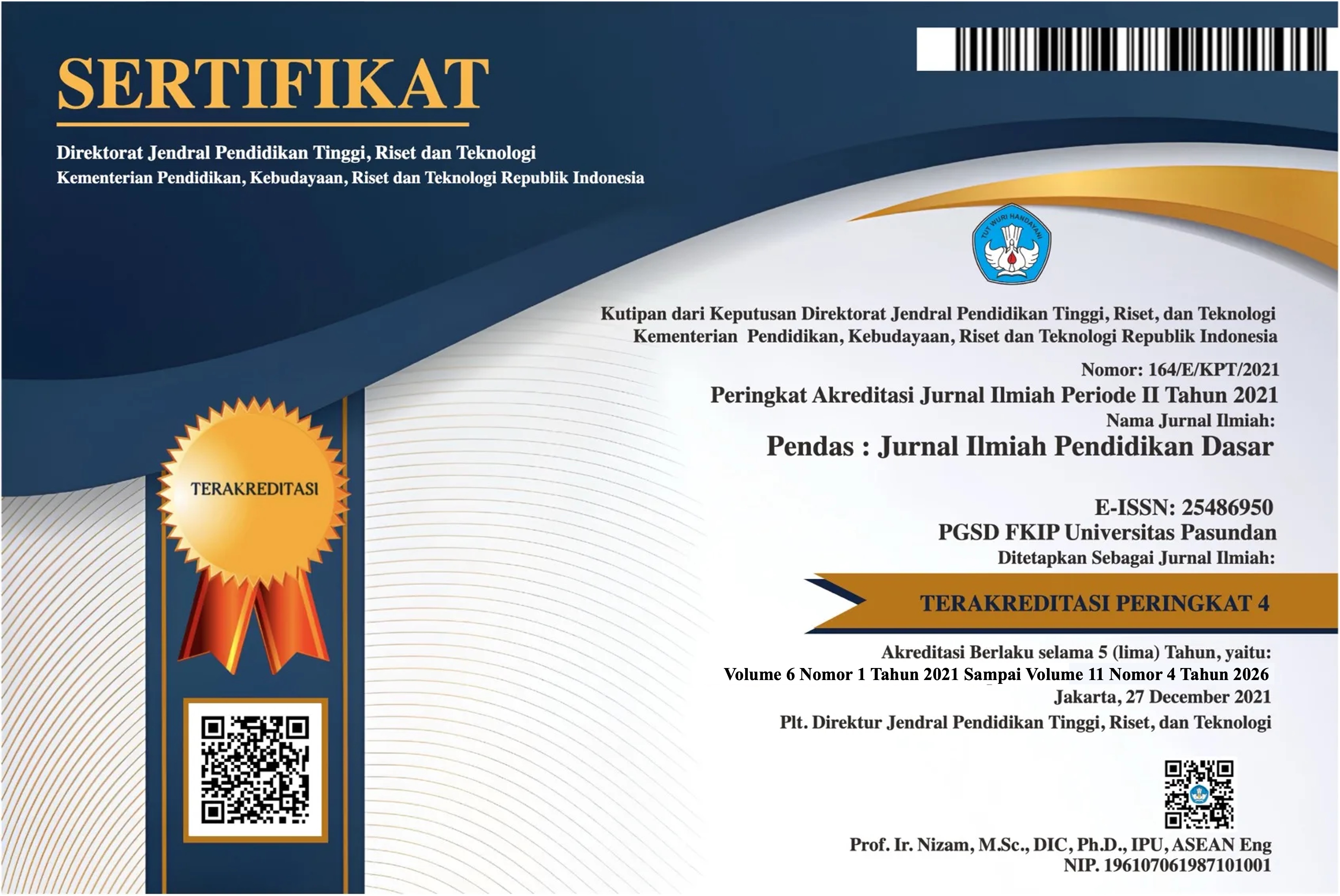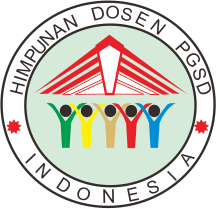LEARNING CYCLE 9E DAN SELF CONFIDENCE: DAMPAK KEMAMPUAN PEMECAHAN MASALAH MATEMATIS
DOI:
https://doi.org/10.23969/jp.v10i2.25854Keywords:
mathematical problem solving ability, learning cycle 9e, self confidenceAbstract
This research aims to analyze the influence of the Learning Cycle 9E instructional model on students abilities in solving mathematical problems, to assess the impact of varying levels of self-confidence (high, medium, low) on these abilities, and to explore the interaction effect between the Learning Cycle 9E model and self confidence on students mathematical problem solving skills. This study employed a quasi experimental design. The population comprised eighth-grade students at MTs Negeri 1 Bandar Lampung. Cluster random sampling was applied as the sampling method. Data collection involved administering a mathematical problem-solving test and a self-confidence questionnaire. Hypothesis testing was conducted using two-way ANOVA. The findings of the study indicate that (1) the Learning Cycle 9E instructional model significantly influences students’ mathematical problem-solving abilities; (2) different levels of self-confidence (high, medium, low) affect students’ skills in solving mathematical problems; and (3) there is a significant interaction between the Learning Cycle 9E model and self-confidence in shaping students’ mathematical problem-solving performance.
Downloads
References
Alamsyah, M. A. (2023). Dampak Pembelajaran Learning Cycle 9E Terhadap Hasil Belajar Siswa pada Materi Struktur Atom Terintegrasi Islam. In Universitas Islam Negeri Sultan Syarif Kasim Riau.
Anuraga, G., Indrasetianingsih, A., and Athoillah, M. (2021). Pelatihan Pengujian Hipotesis Statistika Dasar Dengan Software R. Jurnal BUDIMAS, 3(2), 328.
Assi, K. J., Saad, N., and Sankaran, S. (2023). 9E Learning And Teaching And Its Application In Higher Secondary Education School System. Journal of Intercultural Communication, 23(1), 47–48. https://doi.org/10.36923/jicc.v23i1.127
Buwono, iffah S., Kartono, and Asih, T. S. N. (2020). Peran Kid- Friendly “ Rubrics ” dalam Pembelajaran 9E Learning Cycle Terhadap Kemampuan Penalaran Matematis Siswa. PRISMA, Prosiding Seminar Nasional Matematika, 3, 62.
Fitayanti, N., Rahmawati, A., and Asriningsih, T. M. (2022). Dampak Self-Confidence Terhadap Kemampuan Pemecahan Masalah Matematika Siswa. JPMI (Jurnal Pembelajaran Matematika Inovatif), 5(2), 342. https://doi.org/10.22460/jpmi.v5i2.9678
Lena, M. S., Netriwati, and Aini, N. R. (2019). Metode Penelitian. CV IRDH.
Nurhalimah, S., Hidayati, Y., Rosidi, I., and Hadi, W. P. (2022). Hubungan Antara Validitas Item Dengan Daya Pembeda Dan Tingkat Kesukaran Soal Pilihan Ganda Pas. Natural Science Education Research, 4(3), 251. https://doi.org/10.21107/nser.v4i3.8682
Nurojab, E. S., Triyana, V., and Sari, A. (2019). Hubungan Self Confidence Terhadap Kemampuan Pemecahan Masalah Matematik Siswa. JPMI (Jurnal Pembelajaran Matematika Inovatif), 2(5), 330.
Nuryadi, Astuti, T. D., Utami, E. S., and Budiantara, M. (2017). Dasar-dasar Statistik Penelitian. In Sibuku Media. Sibuku Media.
Prambudi, J., and Imantoro, J. (2021). Dampak Kualitas Produk Dan Harga Produk Terhadap Keputusan Pembelian Produk Pada Ukm Maleo Lampung Timur. Jurnal Manajemen Diversivikasi, 1(3), 690.
Rahmadhani, E. (2018). pembelajaran process oriented guided inquiry learning (POGIL): Peningkatan disposisi matematika dan self-confidence mahasiswa tadris matematika. Jurnal Riset Pendidikan Matematika, 5(2), 161. https://doi.org/10.21831/jrpm.v0i0.20962
Sanaky, M. M., Saleh, L. M., and Titaley, H. D. (2021). Analisis Faktor-Faktor Keterlambatan Pada Proyek Pembangunan Gedung Asrama Man 1 Tulehu Maluku Tengah. Jurnal Simetrik, 11(1), 433. https://doi.org/10.31959/js.v11i1.615
Sari, E. R. (2020). Dampak Pembelajaran Inkuiri Terbimbing dengan Pendekatan Kontekstual Terhadap Hasil Belajar Matematika Siswa SD Negeri 1 Katobengke. Jurnal Akademik Pendidikan Matematika, 6, 76. https://doi.org/10.55340/japm.v6i1.201
Sianturi, R. (2022). Uji Homogenitas Sebagai Syarat Pengujian Analisis. Jurnal Pendidikan, Sains Sosial, Dan Agama, 8(1), 392. https://doi.org/10.53565/pssa.v8i1.507
Sudiantini, D., and Shinta, N. D. (2018). Dampak Media Pembelajaran Terhadap Kemampuan Berpikir Kreatif Dan Penalaran Matematis Siswa. Jurnal Penelitian Dan Pembelajaran Matematika, 11(1), 178. https://doi.org/10.30870/jppm.v11i1.2996
Sugiyono. (2022). Metodologi Penelitian Kuantitatif, Kualitatif dan R & D. Penerbit Alfabeta.
Suryani, L., Fadila, A., and Andriani, S. (2024). Pembelajaran PME : Kemampuan Pemecahan Masalah Matematis Ditinjau dari Literasi Digital. JKPM: Jurnal Kajian Pendidikan Matematika, 9(2), 266.
Ulandari, L., Amry, Z., and Saragih, S. (2019). Development of Learning Materials Based on Realistic Mathematics Education Approach to Improve Students’ Mathematical Problem Solving Ability and Self-Efficacy. International Electronic Journal of Mathematics Education, 14(2), 375–383. https://doi.org/10.29333/iejme/5721
Zukhriya, R., Zaenuri, and Walid. (2023). Systematic Literature Review : Kepercayaan Diri ( Self Confidence) Dan Kemampuan Pemecahan. Pedagogy : Jurnal Pendidikan Matematika, 8(2), 130–144.
Downloads
Published
Issue
Section
License
Copyright (c) 2025 Pendas : Jurnal Ilmiah Pendidikan Dasar

This work is licensed under a Creative Commons Attribution 4.0 International License.



















